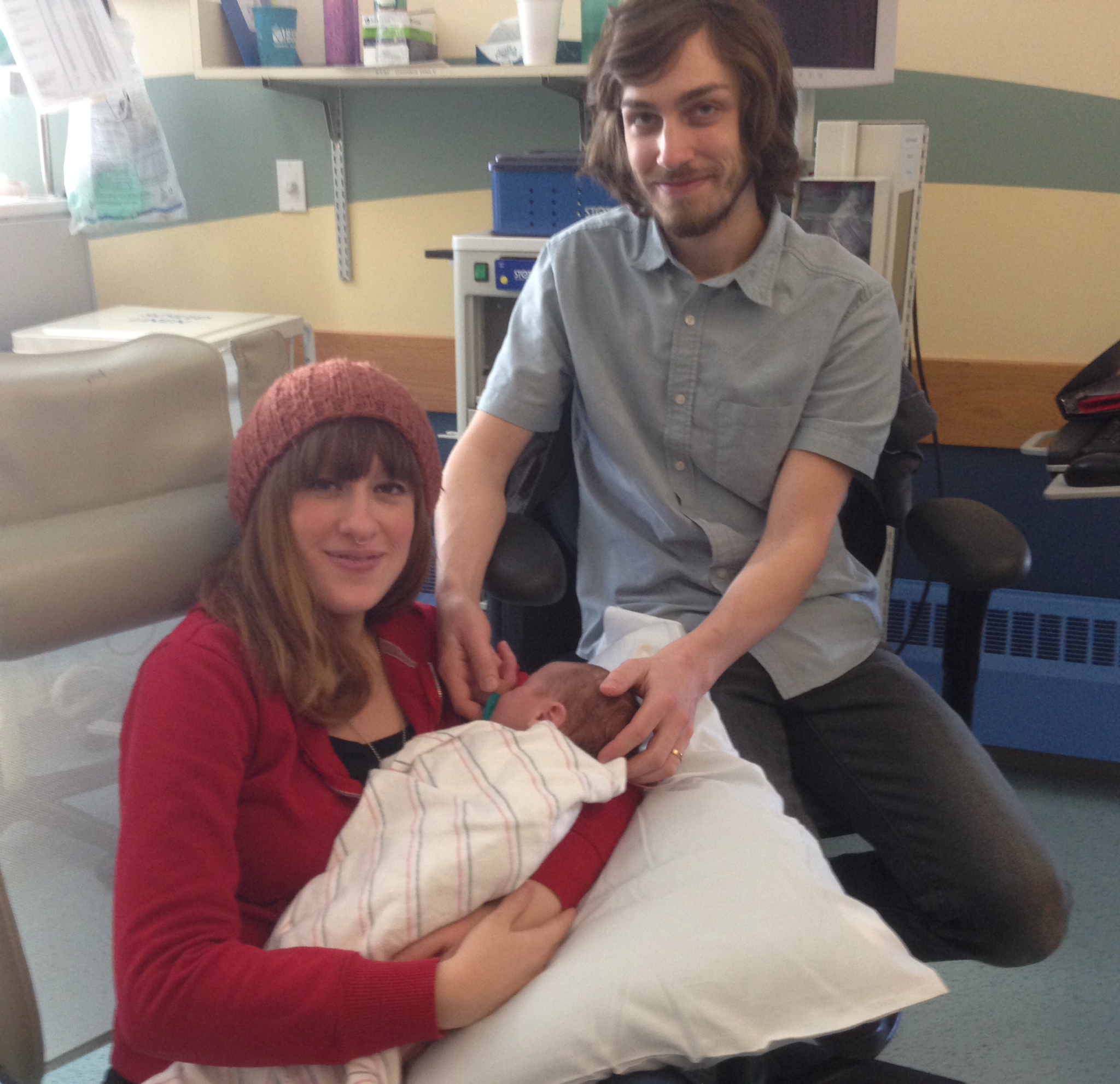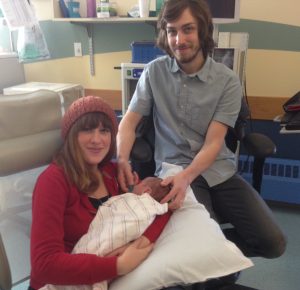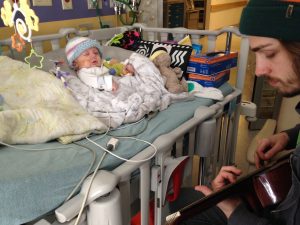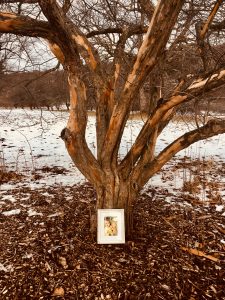1/30/2020
·Enable high contrast reading
Finding HOME in the NICU and the Heart

 Our son Sage was born healthy, or so we believed. There were no pre-determined problems or complications during my pregnancy with him and his birth was a truly beautiful and profoundly spiritual experience. The morning of our intended discharge, as we were packing and preparing to bring our newfound love home, Sage suffered a series of seizures and de-stated dramatically.
Our son Sage was born healthy, or so we believed. There were no pre-determined problems or complications during my pregnancy with him and his birth was a truly beautiful and profoundly spiritual experience. The morning of our intended discharge, as we were packing and preparing to bring our newfound love home, Sage suffered a series of seizures and de-stated dramatically.
After a team of doctors worked feverishly to resuscitate our son, we were informed that Sage’s heart was massively enlarged, he was indeed suffering seizures, and doctors suspected he had experienced a devastating stroke after birth. His heart and brain were both effected and he needed to be transferred to a high level NICU for treatment.
We left most of our belongings at the hospital and followed the ambulance to the city. Our immense joy and innocent bliss shattered so unexpectedly.
That evening, neonatologists explained to us that Sage had been born with a massive Cerebral Arteriovenous Malformation (a high flow tangle of arteries without capillaries) — one so large that it had fully consumed and destroyed the entire left hemisphere of his brain. They confessed to us that they had never encountered a patient like our son before. His condition was beyond rare; it was truly unpredictable.
The specifics of Sage’s condition were infinitely complicated. Our son was medically complex and would require brain surgeries and interventions for as long as could be scheduled. The question that loomed before us was “How do we heal him enough to bring him home?” Home, the one place we longed so desperately to be and had planned to return to only days before the trauma began. Home was the epitome of comfort and safety, the refuge we desperately needed and deserved.
After several days of Neurosurgery rejecting our pleas to intervene, we transferred to the major children’s hospital where Sage would eventually undergo 5 brain surgeries all before the age of 3 months old.
At first, dwelling in the hospital meant being in an utterly unnatural state and place. We were heartbroken terrified parents of a newborn living our lives in front of teams and teams of medical professionals. Our personal tragedy, and how we chose to navigate it, was laid out publicly. Initially, every experience and sensation there felt jagged and cutting and harsh. Trying to heal from birth, being intensely vulnerable, and nursing our own fears while tending to our sick baby, felt foreign and overwhelming. My husband and I often felt that we were living in a sort of chaotic beehive — there was an energy and buzz within the NICU that is hard to articulate, but palpable in feel, especially to those who are more sensitive to their surroundings.
In the early days of Sage’s hospitalization, we spent a lot of time observing the relationships and roles around us so that we could best understand the inner workings of the hospital and learn how to best advocate for our son’s needs.
The rarity of Sage’s condition created a constant state of emergency, uncertainty and danger. There was never a respite. But in our minds, if we could make it home with him, perhaps somehow, we could be free of the creeping darkness of his potentially fatal condition and free of the fear of a catastrophic future.
Throughout the many harrowing treatments, interventions and brain surgeries, we clung to a profound sense of gratitude and hope tethered in an endless, impenetrable and unyielding love for our beautiful Sage. In meetings with various teams, evaluating his delicate status, and in treating the myriad of complex symptoms, we were always engaged in making plans for a point in his future when discharge would be within in our grasp.
Yet home remained an elusive destination, a promised land of sorts, a concept of safety we were always dreaming of, planning for, hoping to usher our son to. Going home, for us, would mean an end to the nightmare we had been thrust into, it would mean an end to our feelings of powerlessness. For the medical team, going home was indeed the final goal. And we all felt strongly that if Sage could come home we could finally begin to establish a new normal for our family and our future.
Yet over time, our conception of safety began to change. After his first brain embolization, Sage was eventually discharged to a community hospital, the last step we were told we needed before he could finally transition home. But after a week in that hospital, the Neonatologists there felt our son was far too sick for their unit and was emergency transferred back to Children’s. That experience and setback altered us. It led us to question many of the concepts, beliefs and goals we had been tightly holding.
After one more month of care and treatment at BCH, training and extensive preparation, Sages’ team felt he was finally ready to be discharged out of the NICU. Another brain embolization awaited him, several months out, so we were given the option of a new placement within the hospital or we could go take him home. Naturally, we chose to bring our son home.
I wish that in that time we had been able to feel the rush and relief of being out of the hospital, but during those four bittersweet days Sage was in excruciating pain, immense neurological distress, and experienced what we soon learned was horrific and irreversible brain stem impingement. In those four trying, frantic days, we brought him back to the ER twice and were constantly seeking help from his various medical teams.
With broken hearts we realized Home was not at all a safe place for our son to be and so we insisted on a readmittance. The parental intuition and care we so strongly felt for our baby led us to understand that crushed expectations had given way to a greater understanding of our son’s true needs.
 Despite how unbelievably sick and fragile our son was, my husband and I did everything in our power to create an environment of love and comfort for him. We consciously made a home where we were; we created daily rituals within the rhythms of Sage’s day; we had music playing for him and made music for him; we sang to him, read to him, held him stroked his precious head and body, and always spoke tenderly to him. We brought blankets and clothes from home, as well as his baby toys and pacifiers. We believed deeply that our son deserved the beginnings that healthy babies are entitled to, despite the bloody pic-line and endless bandages and tubes that penetrated his small new body. We took time to connect with and continually thank each nurse that entered our family’s life and cared for Sage. We strived to building a foundation of respect and trust with every member of Sage’s team. We cherished the multifaceted role we played on our child’s behalf. Slowly, we became accustomed to our environment and even began to thrive there. The union of care and effort being put forth on our son’s behalf was immense.
Despite how unbelievably sick and fragile our son was, my husband and I did everything in our power to create an environment of love and comfort for him. We consciously made a home where we were; we created daily rituals within the rhythms of Sage’s day; we had music playing for him and made music for him; we sang to him, read to him, held him stroked his precious head and body, and always spoke tenderly to him. We brought blankets and clothes from home, as well as his baby toys and pacifiers. We believed deeply that our son deserved the beginnings that healthy babies are entitled to, despite the bloody pic-line and endless bandages and tubes that penetrated his small new body. We took time to connect with and continually thank each nurse that entered our family’s life and cared for Sage. We strived to building a foundation of respect and trust with every member of Sage’s team. We cherished the multifaceted role we played on our child’s behalf. Slowly, we became accustomed to our environment and even began to thrive there. The union of care and effort being put forth on our son’s behalf was immense.
Despite the grimness of our situation, we remained grounded in love, for love is greater than fear and uncertainty. In many ways, love protected and shielded our family from the splintering effects of tragedy as it unfolded. 
Sage’s brainstem was never able to recover, and for reasons we still do not understand, blood began to back up into the one healthy remnant of his brain, his Right Hemisphere, and slowly destroy it. Incurable seizures took hold over several weeks and on a bright clear summer day, Sage died in our arms in his small hospital room.
In the years since his death, with the deep contemplations of grief that have followed, we have come to realize that our son’s true home was within the environment of love we created for him in the hospital, and now in the beyond. At first, that truth utterly destroyed my husband and me: our son never knew the feeling of sun on his skin, he never slept a night in his beautiful crib that waited to hold him. He did not live in any way that was normal or ordinary. Everything about his life was extra-ordinary.
Our conceptions of right and wrong, just and unjust, deserved and undeserved have been distorted and altered since his death. That is a difficult after-effect of grief, and the grief has been immense. But there has also been gratitude for his life and grounding in deep love absent of guilt.
Losing Sage has naturally severed many of our physical attachments to the things around us, including our sense of home. Our home, absent of Sage, will forever possess a sense of emptiness. Because of that, when we look for those divine traces of our lost son, he is not found in a bedroom, or in his old crib. He is no longer in the hospital that sheltered him. We find him within ourselves and our own hearts, and within the beautiful facets of the natural world. 
Hannah Schermerhorn, LMT





